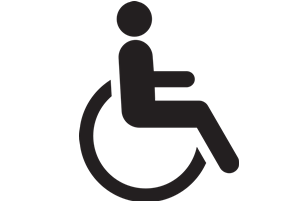The emergence of IoT has been great news for people with disabilities, making many lives so much easier due to the many tools, devices and add-ons that are now available which have improved user access. Given that it is now common practice to use the web to access a range of different resources across a wide range of sectors from education, government, business, healthcare and employment, having this access bring more opportunities and enhances quality of life for people with disabilities, says freelance technology writer, Jocelyn Brown.
The definition of accessibility
According to McAfee in a report from 2013, in the sphere of IoT, the definition of ‘accessibility’ in this context, is being able to access the information you need from anywhere, any network and in any environmental conditions. This means that user accessibility should be maintained across networks. For example, a user with a hearing impairment should be able to access subtitles to understand instructions when moving from one network to another without losing accessibility along the way.
Essential user experience tools and standards
Some user experience (UX) designers have developed a series of tools to increase the accessibility of apps. These include supporting keyboard navigation, providing alt-text for images, designing usable focus states, and increasing colour contrast. These standards amplify access for users with audio-visual disabilities, giving them the option to enlarge text and icons, or providing devices that can recognise sign language.
Accessibility is now a high priority for business owners

Accessibility in the online world has now become a legal issue, so providing these standards will help prevent lawsuits being filed for violations of the Americans with Disabilities Act. According to a report from Gartner, by 2020 accessibility would have become a high priority amongst technology developers. It is estimated that more than half of new business systems and processes will have integrated IoT to some degree in the next two years.
Providing alternative accessibility methods for a range of disabilities
Moving forward, all IoT devices should be designed with accessibility in mind. This means that providing basic accessibility so your product is user-friendly should take priority over more superficial features. All devices should be designed with the intention of providing accessibility for a range of different impairments such as cognitive, hearing, visual, and motor disabilities, in which alternative output methods are available to cater for the whole spectrum of access requirements.
Accessibility for an aging population
Consideration must also be given to an aging population, meaning that accessibility will become particularly important for any IoT devices associated with aging and health. Providing features such as larger screens, buttons, text, and different input methods such as voice is essential to cater for reduced motor control.
Building in interconnectivity
Finally, interconnectivity and cooperation between a range of applications will be an important aspect moving forward for IoT accessibility and inclusivity. For example, needing to download five different apps to control five different devices is inconvenient, inefficient and long-winded. So thought needs to be put into streamlining accessibility and making it as user friendly as possible.
The author is freelance technology writer, Jocelyn Brown.
Comment on this article below or via Twitter: @IoTNow_OR @jcIoTnow










